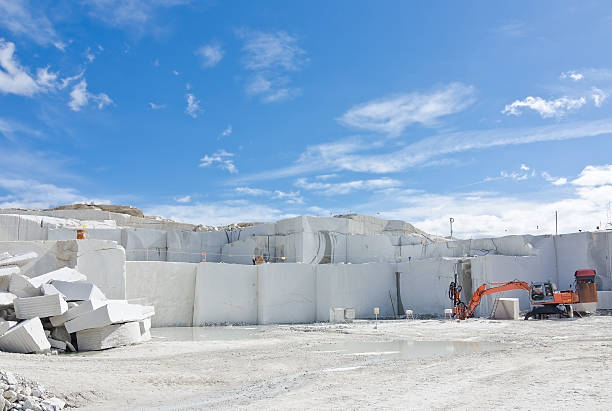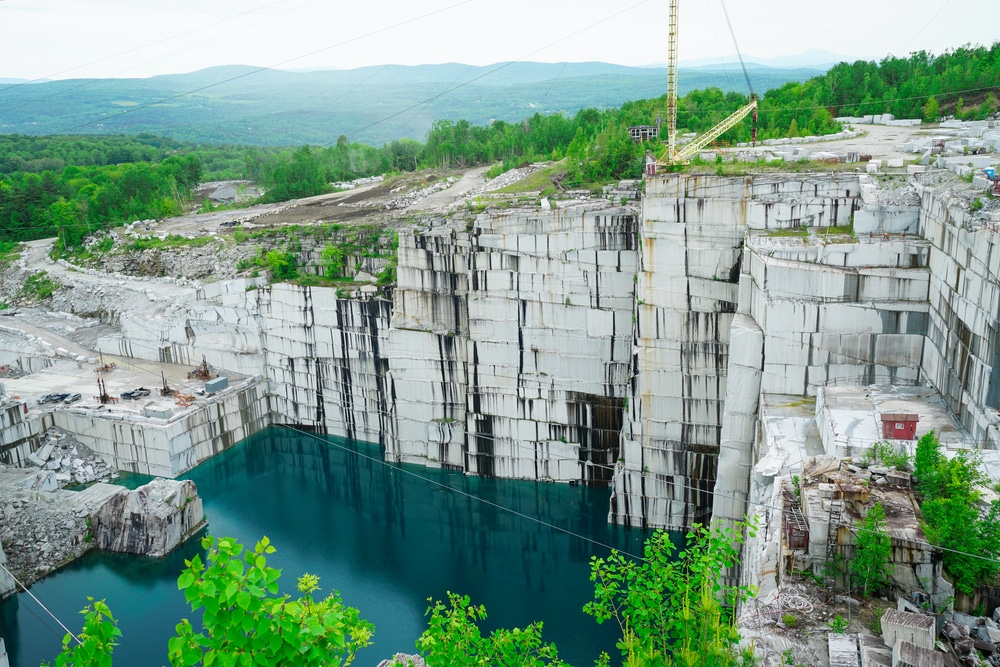The Covert Treasures: Exploring Granite Quarries in South Africa
The Covert Treasures: Exploring Granite Quarries in South Africa
Blog Article
Revealing the Mysteries of Granite Quarrying: Where Toughness and Elegance Meet
The world of granite quarrying is a realm where the raw toughness of nature converges with human artistry to produce structures that stand the examination of time with an air of style. From the depths of quarries to the precise polishing in workshops, the process of transforming granite into architectural marvels is a complicated dancing of practice and innovation. As we peer right into the midsts of this old craft, we start to reveal the hidden intricacies that form the really significance of our constructed atmosphere.
The Beginnings of Granite Quarrying
In the annals of architectural history, the origins of granite quarrying are shrouded in a tapestry of old workmanship and geological wonders. Dating back to ancient Egypt and Mesopotamia, the removal of granite from quarries noted the start of a trip that would ultimately lead to the creation of several of the globe's most renowned frameworks.
Granite quarrying's origins can be traced to the proficient craftsmens who identified the stone's resilience and visual charm. Through a mix of primitive tools and large decision, these early quarry employees discovered granite blocks that would certainly end up being the building blocks of people.
As people evolved, so did the methods of quarrying granite. The Romans, renowned for their engineering prowess, created sophisticated approaches for drawing out granite to construct monuments, holy places, and roads that stood the test of time.
The heritage of these old quarrying methods remains to form modern design, with granite remaining a sign of strength and beauty in construction jobs around the globe. (granite quarries in south africa)
Devices of the Quarrying Trade
The evolution of granite quarrying strategies from ancient people to modern-day times highlights the crucial function played by the tools of the quarrying sell forming the sector's practices. In ancient times, quarrying tools were simple, often consisting of chisels, hammers, and wedges made from materials like bronze or iron. These tools needed considerable workforce and time to essence granite blocks from quarries.

In addition, the introduction of pneumatic tools and high-powered equipment has actually significantly decreased the physical labor called for in quarrying procedures, enhancing worker security and performance. As the quarrying sector remains to innovate, the tools of the trade remain at the leading edge of driving development and forming the future of granite removal.
Removing Blocks of Granite
Utilizing precision equipment and progressed strategies, the removal of granite obstructs from quarries has actually ended up being an innovative process in the modern quarrying market. The initial step entails recognizing the area and dimension of the granite deposit to determine one of the most reliable extraction method. Once an ideal website is chosen, the extraction procedure begins with the drilling of openings for the placement of explosives. Controlled blowing up methods are then used to disintegrate the granite into workable areas.

Polishing and Finishing Strategies
To attain a flawless surface area on granite blocks, proficient craftsmens utilize a series of thorough sprucing up and finishing strategies. After the first extraction and shaping procedures, the granite obstructs undertake a thorough sprucing up stage to improve their all-natural elegance and toughness. One typical approach utilized in polishing granite is diamond abrasion, where industrial diamonds are utilized to grind and polish the stone to a smooth surface. This procedure not only develops a glossy surface area but additionally guarantees harmony in color and texture across the granite block.
In enhancement to polishing, finishing strategies are applied to additional improve the granite's look. By carefully choosing and applying these brightening and finishing methods, artisans can change raw granite blocks into charming pieces that showcase both strength and elegance.

Ecological Influence and Sustainability
With the expanding emphasis on environmental consciousness in the market, granite quarrying practices are significantly scrutinized for their effect on natural deposits and long-lasting sustainability. Quarrying for granite can have substantial environmental implications. The extraction process commonly includes making use of hefty machinery, nitroglycerins, and huge amounts of water, leading to environment devastation, dirt disintegration, and water pollution. In addition, the transportation of granite from quarries to processing facilities creates carbon discharges, additionally contributing to ecological degradation. granite quarries in south africa.
To mitigate these influences and make certain sustainability in granite quarrying, sector stakeholders are embracing different measures. Applying sophisticated technologies to minimize energy intake and water usage, redeeming quarried land for eco-friendly repair, and promoting responsible sourcing practices are some strategies being utilized. In addition, qualifications such as the Woodland Stewardship Council (FSC) and the Management in Energy and Environmental Layout (LEED) aid visit this website customers identify eco-friendly granite items.
Conclusion
In conclusion, granite quarrying is a procedure that calls for specialized devices and methods to essence blocks redirected here of granite and polish them to a high degree of surface. While the environmental influence of quarrying can be substantial, efforts are being made to boost sustainability methods in the industry. Overall, granite quarrying is a fragile balance in between taking advantage of the strength and style of this natural stone while lessening its influence on the atmosphere.
Report this page